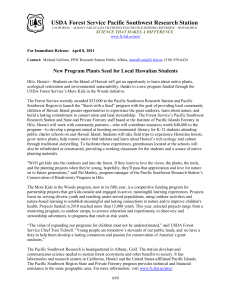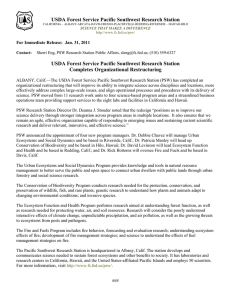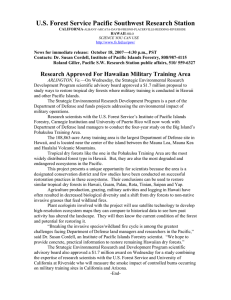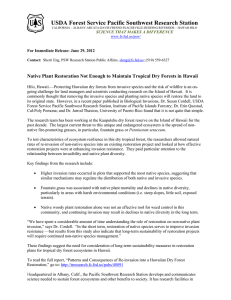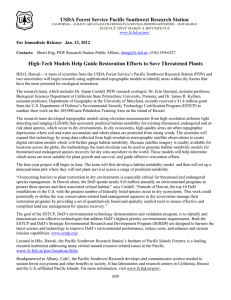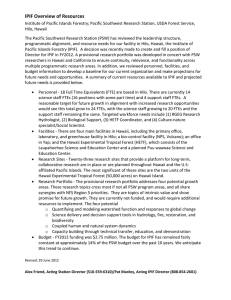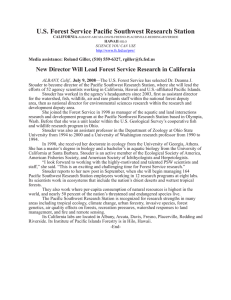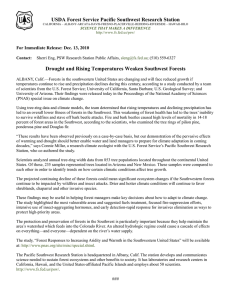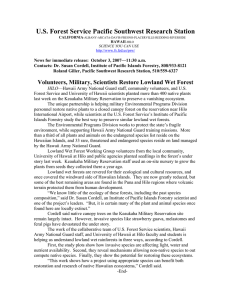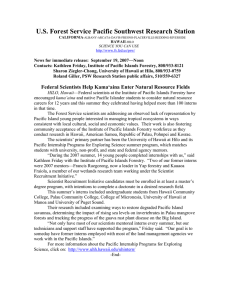USDA Forest Service Pacific Southwest Research Station
advertisement
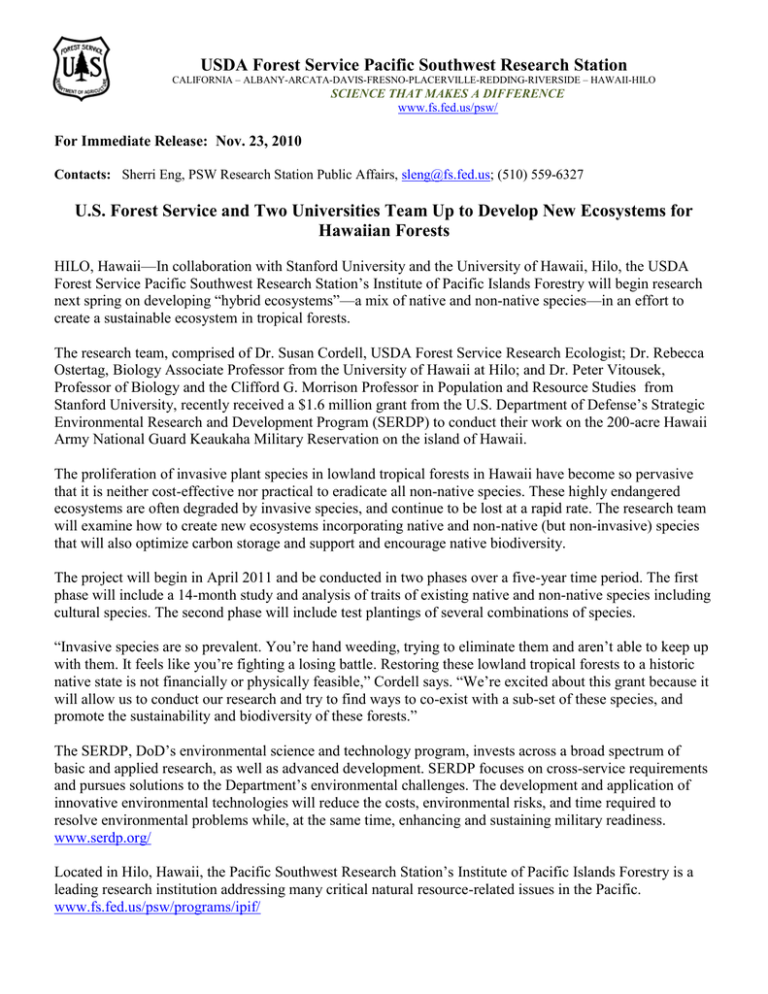
USDA Forest Service Pacific Southwest Research Station CALIFORNIA – ALBANY-ARCATA-DAVIS-FRESNO-PLACERVILLE-REDDING-RIVERSIDE – HAWAII-HILO SCIENCE THAT MAKES A DIFFERENCE www.fs.fed.us/psw/ For Immediate Release: Nov. 23, 2010 Contacts: Sherri Eng, PSW Research Station Public Affairs, sleng@fs.fed.us; (510) 559-6327 U.S. Forest Service and Two Universities Team Up to Develop New Ecosystems for Hawaiian Forests HILO, Hawaii—In collaboration with Stanford University and the University of Hawaii, Hilo, the USDA Forest Service Pacific Southwest Research Station’s Institute of Pacific Islands Forestry will begin research next spring on developing ―hybrid ecosystems‖—a mix of native and non-native species—in an effort to create a sustainable ecosystem in tropical forests. The research team, comprised of Dr. Susan Cordell, USDA Forest Service Research Ecologist; Dr. Rebecca Ostertag, Biology Associate Professor from the University of Hawaii at Hilo; and Dr. Peter Vitousek, Professor of Biology and the Clifford G. Morrison Professor in Population and Resource Studies from Stanford University, recently received a $1.6 million grant from the U.S. Department of Defense’s Strategic Environmental Research and Development Program (SERDP) to conduct their work on the 200-acre Hawaii Army National Guard Keaukaha Military Reservation on the island of Hawaii. The proliferation of invasive plant species in lowland tropical forests in Hawaii have become so pervasive that it is neither cost-effective nor practical to eradicate all non-native species. These highly endangered ecosystems are often degraded by invasive species, and continue to be lost at a rapid rate. The research team will examine how to create new ecosystems incorporating native and non-native (but non-invasive) species that will also optimize carbon storage and support and encourage native biodiversity. The project will begin in April 2011 and be conducted in two phases over a five-year time period. The first phase will include a 14-month study and analysis of traits of existing native and non-native species including cultural species. The second phase will include test plantings of several combinations of species. ―Invasive species are so prevalent. You’re hand weeding, trying to eliminate them and aren’t able to keep up with them. It feels like you’re fighting a losing battle. Restoring these lowland tropical forests to a historic native state is not financially or physically feasible,‖ Cordell says. ―We’re excited about this grant because it will allow us to conduct our research and try to find ways to co-exist with a sub-set of these species, and promote the sustainability and biodiversity of these forests.‖ The SERDP, DoD’s environmental science and technology program, invests across a broad spectrum of basic and applied research, as well as advanced development. SERDP focuses on cross-service requirements and pursues solutions to the Department’s environmental challenges. The development and application of innovative environmental technologies will reduce the costs, environmental risks, and time required to resolve environmental problems while, at the same time, enhancing and sustaining military readiness. www.serdp.org/ Located in Hilo, Hawaii, the Pacific Southwest Research Station’s Institute of Pacific Islands Forestry is a leading research institution addressing many critical natural resource-related issues in the Pacific. www.fs.fed.us/psw/programs/ipif/ The Pacific Southwest Research Station is headquartered in Albany, Calif. The station develops and communicates science needed to sustain forest ecosystems and other benefits to society. It has laboratories and research centers in California, Hawaii, and the United States-affiliated Pacific Islands. www.fs.fed.us/psw/. ###
